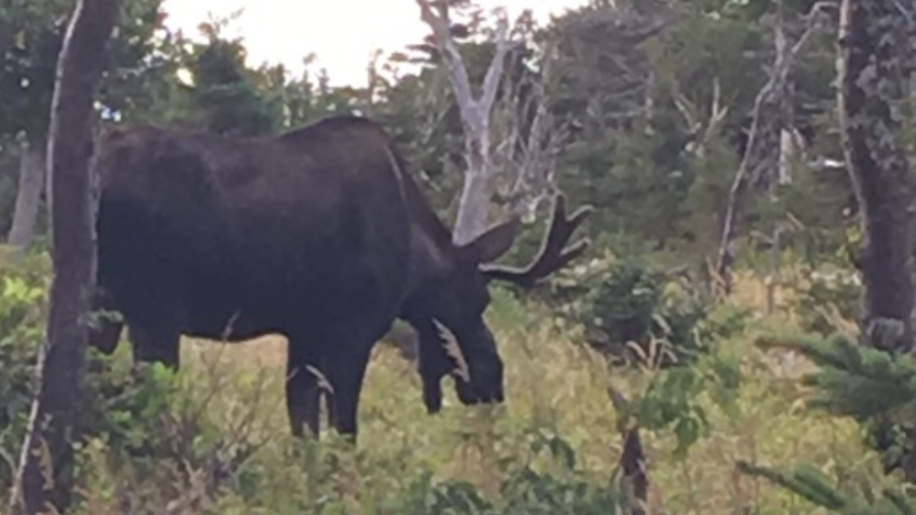Moose
What you need to know about the Cape Breton moose harvest
Mi’kmaq hunters are harvesting moose from Cape Breton Highlands National Park

caption
A moose on the Skyline Trail within the Cape Breton Highlands National Park. Taken August 2018.The fourth Mi’kmaq-led moose harvest in the Cape Breton Highlands National Park is underway.
Beginning on Nov. 6, with a scheduled end date of Dec. 3, this final harvest is part of a pilot project that began in 2015. Parks Canada and the Unama’ki Institute of Natural Resources started the initiative to help restore the boreal forest, which has had more grasslands sprouting than trees.
Mi’kmaq hunters can hunt moose within a 20 km² area. The total harvest, which has a goal of 30 to 40 moose, will be distributed to all of the Mi’kmaq communities in Nova Scotia who can then use their supply for meat and to create traditional items such as drums.
Rob Howey, resource conservation manager for Cape Breton Highlands National Park, said the harvest is just one technique being used by Parks Canada for the Bring Back the Boreal pilot restoration project.
Howey said there are 1,800 moose in the park, which is considered “hyper abundant.” This means there are too many for the area that they cover. The moose eat young trees, so the forest doesn’t grow as quickly as it should.
Mi’kmaq tradition
Howey said Parks Canada is committed to developing a system of national heritage places that recognizes the role of Indigenous people and how they use the land.
“Parks Canada is interested in supporting Mi’kmaq reconnection with traditional lands and traditional practices,” said Howey.
Nadine Lefort, communications and outreach manager at the Unama’ki Institute of Natural Resources, said since 2015 over 56,000 lbs of moose meat has been distributed throughout the province. Hides have been used to make drums for schools and antlers and bones have been used for crafts.
“From our perspective, that is a significant benefit of the moose harvest in Cape Breton Highlands National Park,” Lefort said in an email.
She brought up an article by Chief Rod Googoo of the We’koqma’q Mi’kmaw community, to better explain why it should be called a harvest instead of a cull.
The Mi’kmaq were upset to hear that the moose would be culled and did not want an animal to be killed for sport or its body to be left to rot. They promised they would respect the body and the soul of the moose and only use it for cultural and physical survival.
Measuring success
Howey said the project is allowing Parks Canada to assess changes in the boreal forest vegetation by assessing animal responses to these changes. He said, in regards to the moose harvest, they will be measuring how much has been eaten by moose when they are browsing, plant growth and tree density to track changes.
Parks Canada will assess their forest management techniques used during the experiment and test out other techniques like fencing in areas on the Skyline Trail and plant trees within that area.
Howey said there will not be a full assessment done until after the final harvest, but early assessments have shown positive results.
“While it is too early to tell if the reduction in moose population has had a lasting impact on vegetation on North Mountain, preliminary results show a decrease in browse impacts since the project started,” he said.


E
Elizabeth